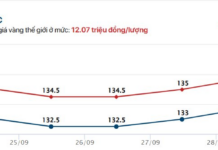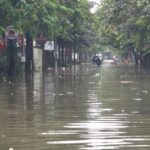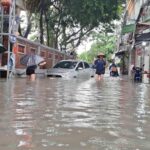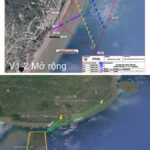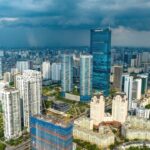The rainy and stormy season often extends, making flooding an inevitable risk. For car owners, damage caused by waterlogging not only results in costly repairs but also poses potential complications if insurance policy terms are not thoroughly understood.
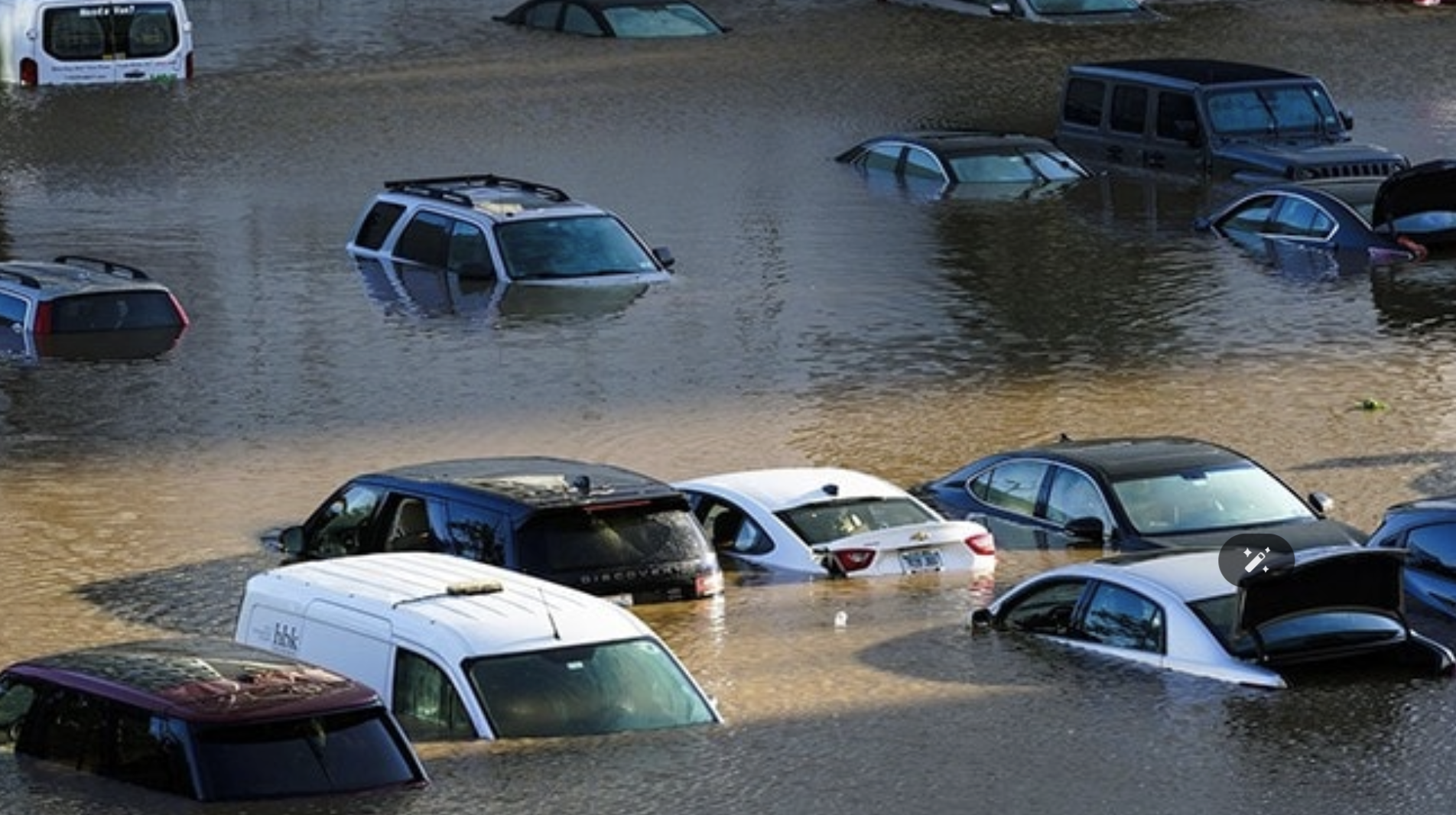
Vehicles Flooded Due to Heavy Rain
First and foremost, it’s essential to recognize that flooding caused by heavy rain falls under the category of “unavoidable natural disasters.” If the vehicle owner has an active comprehensive insurance policy, the insurance company will cover the repair costs within the scope of the contract.
However, practical experience shows that to receive full compensation, the vehicle owner must immediately contact the insurance company upon discovering the flood damage. The insurer will dispatch an adjuster to the scene to verify the cause and extent of the damage and file a claim. This is a crucial step to ensure the owner’s rights are protected.
If the owner moves the vehicle to a garage or initiates repairs without notifying the insurer, the company may reduce the compensation to 70–80% of the actual damage value. Therefore, adhering to the notification and inspection process is vital.
Hydrolock in Vehicles
Hydrolock occurs when water enters the combustion chamber while driving through deep water or attempting to start a stalled engine. This is considered one of the most severe and costly damages, often requiring an engine overhaul or replacement.
It’s important to note that not all comprehensive insurance policies automatically cover hydrolock. Owners are only compensated if they have purchased an additional hydrolock coverage extension. The typical payout rate is around 70–80% of the repair costs.
When signing a policy, customers are advised to consider adding this extension. In reality, many cases of stalled vehicles in flooded areas, followed by unsuccessful restart attempts, have led to hydrolock, with engine repair costs often far exceeding the insurance premium.
Electric Vehicles
With the rapid growth of electric vehicles, many insurance companies now offer specialized coverage for this type of vehicle, including both comprehensive insurance and battery insurance.
In the event of natural disasters such as storms, floods, or water damage affecting the battery or electronic components, owners may still receive compensation. The payout terms are similar to those for hydrolock in traditional vehicles, ranging from 70–80% of the damage value, depending on the policy terms.
This is particularly important as the cost of replacing an electric vehicle battery is currently substantial, accounting for 30–40% of the vehicle’s value.
Important Reminders
Always contact the insurance company immediately when an incident occurs.
Document the scene (with photos or videos) as evidence for the inspection.
Do not repair or move the vehicle without the insurer’s approval.
Carefully review the insurance policy, especially extended coverage clauses like hydrolock or electric vehicle battery insurance.
Consider purchasing additional extensions tailored to your needs and vehicle usage, especially in flood-prone areas.
“Heavy Rainfall Submerges Hanoi’s ‘Wealthy Neighborhood’: Luxury Villas Resort to Metal Barriers to Block Floodwaters”
Heavy rainfall throughout the night of September 29-30, caused by the circulation of Typhoon Bualoi, led to severe flooding in several areas within the Geleximco Le Trong Tan and Nam An Khanh districts. Residents struggled to wade through deep waters, pushing their vehicles and using metal sheets to block floodwaters from entering homes and underground parking areas.
What to Do If Your Car Breaks Down in a Flood or Encounters Flooded Roads?
It is imperative that you do not attempt to restart your car if it stalls in a flood. This could cause extensive damage to your vehicle and leave you in a dire situation.
“Restoring Infrastructure and Stabilizing Lives: Nghệ An Province Allocates 500 Billion VND for Flood-Affected Communities”
The severe floods have wreaked havoc, and in response, Nghe An has allocated over VND 500 billion from the central and local budgets for recovery. The primary focus of this allocation is to restore essential infrastructure and stabilize the lives of those affected, ensuring a swift and robust response to the disaster.
Building a Brighter Future: Supporting the Reconstruction of 1,000 Homes in Flood-Affected Nghe An Province
The Central Relief Committee, under the umbrella of the Vietnam Fatherland Front Central Committee, has allocated 65 billion VND from its central relief funds. This amount has been transferred to the Office of the Ministry of Public Security to aid people in Nghe An Province who are reeling from the devastating effects of the recent floods.
Anxiously Reviving the North’s Largest Bonsai Village
“I have to immediately rehabilitate the land and borrow capital for reproduction. The people of Phung Cong will rise again, and the fields will be green,” said Nguyen Thi Quyen determinedly. However, like many other residents of Phung Cong, Sister Quyen is anxious and worried as the dike has been destroyed for a real estate project, and the floods will inevitably return one day…







